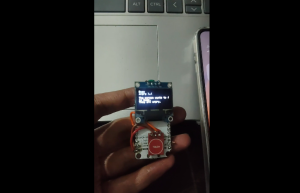Researchers created a stunning 3D model that reveals secrets of the raging supernovas, whose explosions provide the universe with the materials necessary for life.
The new model is the first to represent a supernova explosion in three dimensions, an American Institute of Physics news release reported.
The model shows how the "turbulent mixing of elements inside stars causes them to expand, contract, and spit out matter before they finally detonate," the news release reported.
A supernova dubbed 1987A is bright enough to see from Earth with the naked eye. Past models have not been able to determine how matter ejected from the previous star mixed with material from the supernova.
The team came up with a new mode that pictured the star as "a series of concentric circles, with heavier elements like iron and silicon in the center and lighter elements like carbon, helium and oxygen towards the surface" the news release reported. In this model the heavier elements would exert a gravitational pull on the lighter ones causing the star to contract, heat up, and send neutrinos shooting into space.
When the neutrinos are released they take energy with them; this further weakens the lighter elements against the pull of the heavier ones and causes the star to contract further.
"It heats up and burns faster, making more neutrinos and speeding up the process until you have a runaway situation," W. David Arnett, Regents Professor of Astrophysics at the University of Arizona, who worked to develop the model, said in the news release.
Most computer models run on only one or two dimensions, forcing researchers to make assumptions about how other dimensions behave. This makes the event appear as if one process "smoothly" connects with the other.
This new three dimensional model instead showed a "turbulent" process in which the interior of the star releases star remnants right before its demise.
"We still have the concentric circles, with the heaviest elements in the middle and the lightest elements on top, but it is if someone put a paddle in there and mixed it around. As we approach the explosion, we get flows that mix the materials together, causing the star to flop around and spit out material until we get an explosion," Arnett said.
"That's what see in supernova remnants," he added, referring to the ring of heavy and light elements that form nebulas around stars that went supernova. "We see those ejections of star material, and how they mix with material expelled from the star during its final explosion. Other models cannot explain this," he said.
More data and faster computers allowed for this new model to come into being.
"It would have taken 40 years to run these models on the supercomputers I used in the 1970s. They were feeble compared with my smartphone," Arnett said.
Stronger telescopes also allowed the researchers to learn more about the dying supernovas.
"Instead of going gently into that dark night, it is fighting. It is sputtering and spitting off material. This can take a year or two. There are small precursor events, several peaks, and then the big explosion. Perhaps we need is a more sophisticated notion of what an explosion is to explain what we are seeing," Arnett said.
© 2025 HNGN, All rights reserved. Do not reproduce without permission.








